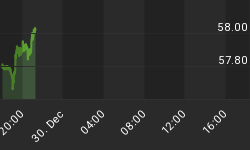The Federal Reserve printed money in 2009 and bailed out the stock market. The Federal Reserve printed money in 2010 and bailed out the stock market. As the financial markets anticipate the next Fed statement due to be released on September 21, the markets are again teetering on the edge of a deflationary abyss.
On August 30, the Fed released the minutes from their last policy meeting. Before we take a look at the buying interest in top-performing QE2 ETFs, let's review the key portions of the Fed minutes:
Committee's forward guidance regarding the federal funds rate, by being more explicit about the period over which the Committee expected the federal funds rate to remain exceptionally low, would be a measured response to the deterioration in the outlook over the intermeeting period. A few members felt that recent economic developments justified a more substantial move at this meeting, but they were willing to accept the stronger forward guidance as a step in the direction of additional accommodation. Three members dissented because they preferred to retain the forward guidance language employed in the June statement.
The Committee noted that it had discussed the range of policy tools that were available to promote a stronger economic recovery in a context of price stability, and to indicate that those tools, including adjustments to the Committee's securities holdings, would be employed as appropriate.
The most important phrases appear to be "were willing to accept the stronger forward guidance as a step in the direction of additional accommodation" and "to indicate that those tools, including adjustments to the Committee's securities holdings, would be employed as appropriate". The "step in the direction of additional accommodation" implies that there will be another step, which supports the stance that more quantitative easing (QE) may be on the way.
On August 18 we examined the winners from QE2 to assess the market's stance on the probability of a third round of quantitative easing (QE3). The statements from the Fed minutes above were new information for traders as of 2 p.m. on August 30. If traders and institutional investors believed QE3 was due to be announced after the September 21 Fed meeting, common sense tells us the trading volume for the winners from QE2 should be above average. The table below shows just the opposite - trading volume for the QE2 winners was unimpressive on the day the Fed minutes were released.

You can make the argument that volume in general has been light due to August vacations. We do not buy that argument. When profits and manager performance are on the line, vacations do not get in the way of what is perceived to be an opportunity to front run the Fed. You can read the lack of interest in QE2 winners in one of two ways:
- The market does not believe QE3 is imminent.
- The market questions if QE3 will be effective in boosting asset prices in a sustained manner.
We believe the odds of QE3 being announced at the September meeting are higher than what is baked into the market's cake. We will continue to monitor the QE2 winners for clues to assist us in making the best decisions possible. It is possible volume and interest in QE2 winners will pick up in the coming days, but until it does, we will continue to hold cash and a small allocation to bonds (TLT). If you missed the August 30 video below, it describes possible strategies based on how the present day market behaves relative to similar markets from 1987, 1990, 1998, 2000, and 2007.
















